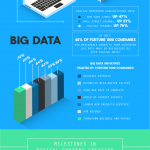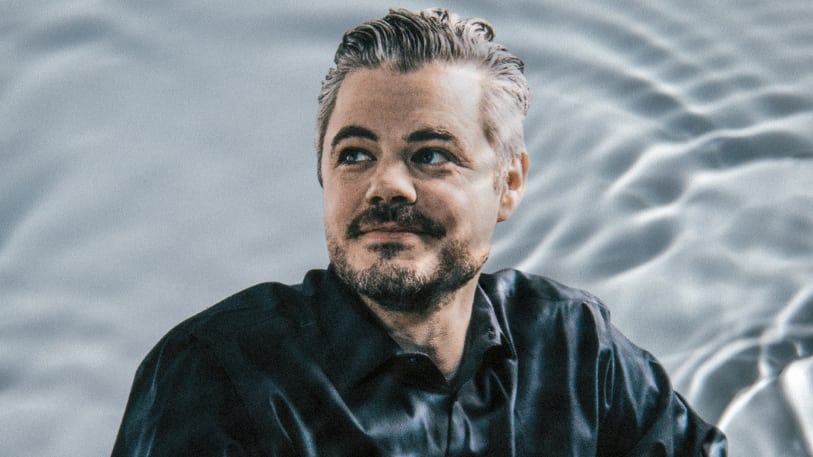How Charity: Water Uses Data To Connect Donors And The People They’re Helping
Most philanthropic galas are designed to celebrate the year’s accomplishments and generate a new round of donations. But for Charity: Water’s annual Charity: Ball last December, CEO Scott Harrison had something unique planned. “There is a big binary risk,” he said as he watched attendees who had paid $2,500 per ticket stream into New York’s Metropolitan Museum of Art. “I’m either going to look very stupid in front of 400 people or maybe make them cry.”
At the sound of a gong, minglers made their way from the entrance hall to a glass atrium containing the dimly lit ancient Temple of Dendur, candle-topped dining tables, and dozens of neon-yellow jerry cans, used to carry water in the developing world (and the company’s logo). At each place setting sat a preloaded, locked iPad, displaying the name and photo of a single, custom-selected resident of Adi Etot, Ethiopia, a community of around 400 people in desperate need of clean water.
Charity: Water’s mission, since its founding in 2006, has been to raise money to help local organizations in the developing world drill wells and pursue other water-pumping and -purification projects. So far, the group, which operates on a $40 million annual budget, has funded nearly 23,000 projects affecting 7 million people. The work, which must be completed village by village, is expensive—the average project costs $10,000 and serves roughly 300 people—and can get tricky. Historically, humanitarian aid groups have wasted hundreds of millions of dollars on poorly planned or maintained projects that have broken down, according to the International Institute for Environment and Development, a global-sustainability research group. Charity: Water, which channels 100% of all public donations toward project costs, avoids that fate by carefully mapping its wells, monitoring flow rates (thanks to a new program that began rolling out in late 2015), and sharing the continually updated information online publicly, which has endeared it to high-powered Silicon Valley donors past and present, such as Jack Dorsey, Chris Sacca, John Doerr, Jonathan Ive, and Angela Ahrendts, many of whom participated in Charity: Water campaigns to use their birthdays as fundraisers.
As plates were being cleared, Harrison, a former high-end club promoter, climbed a small stage to share more about the group, including a video about life in Adi Etot. Afterward, he asked everyone to unlock their devices (password: “together”) to see more photos and learn about their particular community member, and then to donate $30 in his or her honor. A big screen behind the dais filled with grayed-out photos of each person, which changed to color as attendees pitched in.
A few minutes later, the screen flashed a new scene, a live video from Adi Etot. It was after 10 p.m. in New York but dawn in Ethiopia, and attendees were treated to a real-time image of the sun rising over a giant drill surrounded by the local people whose faces they had just seen. The drill fired up and—for the first time ever there—unleashed a geyser of water that sprayed over the cheering people, an electrifying moment that would soon lead to a formal well being installed (and eventually transmitting data). The gala crowd cheered too, and then fell silent as they watched community members celebrate 6,500 miles away. After the scene ended, it was Harrison who had teared up. “I don’t really have much to say,” he said. “I’m glad that worked.” Then he made his true ask: Why not $3 million, to help 100,000 people? “You don’t get a handbag or a trip to Telluride,” he said. “You get nothing out of this except knowing that you can truly, truly impact the lives of people thousands of miles away.” After a moment, everyone began clapping and cheering again.
“The biggest problem with charity is that people don’t trust charity,” says Harrison on a winter morning at Charity: Water’s offices in Tribeca, which feature several artfully arranged jerry cans. Harrison has rolled up the sleeves of his blue button-down. Since founding the organization out of a friend’s living room in Manhattan after two years in West Africa documenting the impact of surgeries by traveling doctors with Mercy Ships, he and his growing team have been committed to transparency. When they first started paying for wells, Google Maps had just debuted, so they began tagging each completed project with GPS coordinates, which they uploaded to a public site along with photos and a map. Michael and Xochi Birch, cofounders of the social network Bebo, volunteered to develop the back-end fundraising technology further, and donations grew. Harrison wanted people to be confident that all of their contributions were going to water projects, so in 2009 he created the Well, a group of dedicated major donors who make multiyear pledges toward overhead. Today, the Well has 118 members and enough reserves to finance nearly two years of operations.
So far, the technology is working. According to Dispatch Monitor, 9 out of 10 of Charity: Water’s transmitting wells in Ethiopia appear to be functioning correctly. Still, a quarter of the wells are sending data that never gets received because they are in cellular dead zones (hence that “Unknown” category on the dashboard). Charity: Water continues to send roving units of mechanics to those areas until connectivity improves.
At the Charity: Ball, guests spent the next 10 minutes punching donation sums into their iPads as Harrison remained onstage to urge them on. Every 15 seconds or so, the screen refreshed showing the evening’s donation total and number of people the sum would help, goosing the pot once with a $500,000 remote donation, and again with a $1 million match from roughly 20 other donors.
The live video from Adi Etot had taken almost six months to plan, requiring coordination with Ethiopian government officials and Charity: Water’s regional well-digging partner, the Relief Society of Tigray, or REST, based 100 miles away over rugged terrain in the city of Mekelle. Two months before the gala, a Charity: Water team had flown to Adi Etot from New York to document life in the farming community for both the video and iPad programming. With the help of a translator, they heard firsthand about such realities as how, during the dry season, women and children could spend all day making three-hour round-trips to collect water. This “has an impact on their education and their health,” says Getachew Kalayu, the head of REST’s planning and coordination department, which planned and executed the dig itself with a surveyor, hydrologist, and village elders. Back in New York, the event team rented iPads, trained volunteers to load them and deal with any glitches that might happen during the event, and then matched each guest with a specific community member according to factors such as gender and general age. Pregnant attendees were paired with other women who were expecting. There were numerous test runs of the live video itself, which, to the planners’ delight, actually worked half the time. (It would only be a one-way feed, saving costs and eliminating the cruel potential of Adi Etot residents having to glimpse a sea of untouched water glasses.)
By any measure, the stunt worked. Charity: Water had raised nearly $3.2 million by night’s end. The figure is not record breaking for the sector. But at a time when galas are often loss leaders, the evening was remarkable: It posted an 8-to-1 return on investment, and nearly everyone in the room contributed. “There is no question this was a fantastically successful event,” says Anne Wallestad, president and CEO of BoardSource, a nonprofit advisory group that, among other things, works alongside other organizations to measure fundraising effectiveness. Other philanthropy groups have taken note. David Goldberg, CEO of Founders Pledge, which guides founders on how to commit to donating at least 2% of their eventual proceeds from exit, says that the model “is changing the way that we think about charity.”
The morning after the event, Harrison sat on a couch in his glass-walled office. Above his perch was a whiteboard that listed the names of all the contributors to the Well. In the coming days, he would write down a few more. Staffers at Charity: Water were already back at work expanding the organization’s data-collection operation to measure health, hygiene, and sanitation changes after wells were installed. It was also time for Harrison to start planning another gala. “I’m already terrified of what we are going to do next year,” he said.
Fast Company , Read Full Story
(43)














